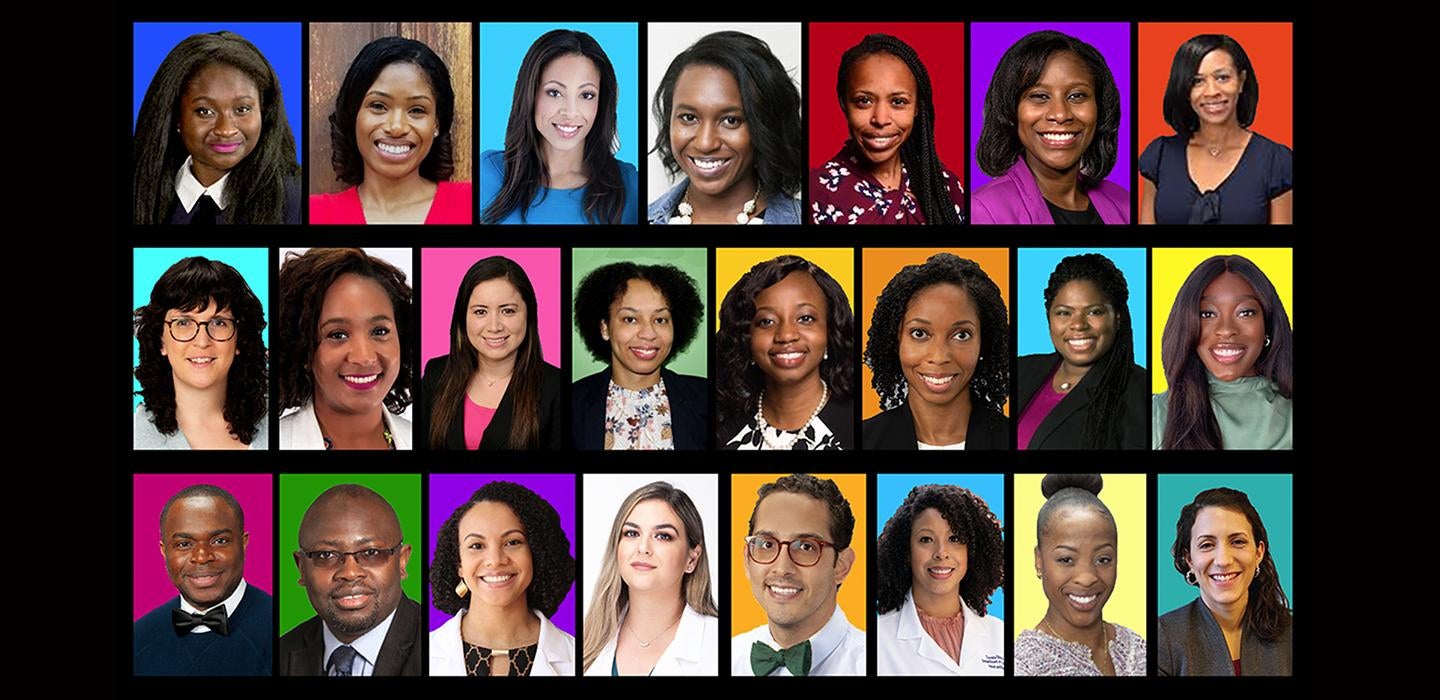
Subscribe to Pittwire Today
Get the most interesting and important stories from the University of Pittsburgh.Onome Oghifobibi arrived at the University of Pittsburgh School of Medicine in 2015 for a pediatric residency and then completed a neonatal-perinatal fellowship, caring for some of the most vulnerable infants in the neonatal intensive care unit. During these years, he witnessed a disconnect between the region’s world-class universities and hospitals and the striking health disparities that some people faced. He wanted to stay at Pitt to help.
His timing was perfect. Because of a University-wide initiative, Oghifobibi is now an assistant professor of pediatrics, where he helps by not only caring for infants but by developing a program with the Allegheny County Health Department to combat a significant health disparity — the distressing rate of maternal and infant mortality in Pittsburgh’s Black and Brown communities. For Oghifobibi, staying at Pitt meant “feeling valued and heard” and that other people cared enough about his community-driven work to retain and support him.
“Staying here is an opportunity for me to help with the health disparity crisis,” he says. “We have the resources — great universities and a world-class health care system.”
Oghifobibi’s hire was a part of the Race and Social Determinants of Equity, Health and Well-being Cluster Hire and Retention Initiative at Pitt. The goals of the initiative are to engage more faculty to conduct research, educate students and engage in service designed to eliminate racial disparities and improve measures of well-being in the Pittsburgh region, nationally and around the world. Leading Pitt’s cluster hire are Paula K. Davis, associate vice chancellor for health sciences diversity, equity and inclusion, and John Wallace, vice provost for faculty diversity and development in the Office of the Provost. The initiative calls for numerous faculty member hires over four years.
In less than a year, the cluster hire has already brought to Pitt many outstanding faculty members. And that’s just the beginning, according to Davis, who chairs the health sciences’ cluster hire committee with Naudia Jonassaint, associate professor and vice chair for diversity and inclusion in the Department of Medicine and associate dean for clinical affairs, and MaCalus Hogan, professor and vice chair of orthopaedic surgery in the School of Medicine.
In addition to Oghifobibi, the cluster hire is bringing faculty with a wealth of academic interests and research expertise to Pitt. Ashley Hill from the Graduate School of Public Health conducts research aimed at reducing disparities in sexually transmitted infections among young people. Taofeek K. Owonikoko is head of the School of Medicine’s hematology/oncology division and focuses on discovering new biomarkers in lung cancer and other solid tumors. Katrina Knight from the Swanson School of Engineering is improving synthetic mesh materials that are used to treat pelvic organ prolapse.
But recruitment is only one part of a successful cluster hire. Davis and Wallace are also actively working to retain new faculty, which involves evaluating the hiring departments’ mentoring and inclusion plans and planning opportunities for new hires to develop social networks. For example, to inspire and encourage collaboration and multidisciplinary research among the cluster hires, the Offices of the Provost and the Senior Vice Chancellor for the Health Sciences co-sponsor the Race &... Lecture Series, which provides a spotlight for each new faculty member to describe their work and interests to the Pitt community.
“The idea is not just to bring people here but to ensure that they’re successful and that we can retain them, as well as, frankly, effectively retaining our existing diverse faculty,” Wallace says.
That Pitt’s cluster hire in the health sciences was able to advance new areas of academic interest and research speaks to the efforts of Davis, Jonassaint and Hogan, each of whom credits the support of Anantha Shekhar, senior vice chancellor for the health sciences and John and Gertrude Petersen Dean of the School of Medicine, who sparked the cluster hire’s success and helped it quickly gain momentum.
“Absent Dr. Shekhar’s and Provost Ann Cudd’s decision to take bold steps to support the hires, we absolutely would not be having this conversation,” says Davis. “In many schools, the approach to diverse, equitable and inclusive recruitment is passive. But this isn’t the field of dreams — you know, ‘if you build it, they will come.’ They’re not coming. You have to build relationships with people.”
To the committee, diversifying the faculty and its research interests through the cluster hire is nothing short of a paradigm shift. They believe the benefits will go beyond research: Pitt’s capacity for innovation will increase, and students and trainees will have role models to provide roadmaps for navigating academic life and career aspirations.
Despite early successes, Wallace, Davis, Jonassaint and Hogan are not done. All agree that investing the resources, creating infrastructure and empowering people to execute a vision will help Pitt become a magnet for change.
“Eventually, it won’t be ‘change’; it’ll just be who we are,” says Hogan. “We’ll be known for valuing people for who they are and what they do.”
The University of Pittsburgh is an affirmative action, equal opportunity institution.
— Maureen Passmore


